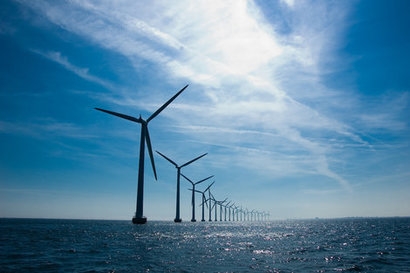
As energy security and energy costs take centre-stage in geopolitics, ORE Catapult’s new Excel and video-based self-contained online modelling course is aimed at those new to offshore wind energy, cashflow-based project valuation, or both. Students need only very basic Excel skills, and curiosity about what makes commercial, utility-scale offshore wind farms sink or swim.
The course site https://ore-catapult-school.thinkific.com has a two-minute overview video, along with detailed information including free video overviews of the course, both as a whole and its individual units; a downloadable course outline and table of contents; student reviews of a successful pilot version; and course pricing, including volume discounts.
It is brought to you by ORE Catapult’s Head of Analysis & Insights Gavin Smart, who is also the co-author of International Energy Agency studies, and independent energy economist, educator and Wiley Finance author, Ken Kasriel.
The course is a blend of over 11 hours of often conversational lectures and video lessons, and hands-on spreadsheet exercises which prepare students for a multi-option case study model. Lessons cover a wide range of topics, including
An overview of what makes for a good offshore wind project site;
Capabilities and limitations of current technology;
How to estimate different turbines' power generation at development sites, with different estimated average wind speeds (data for which is freely available from public third party websites), and see the impact on total farm revenue;
How to model the relevant cash flows; and a detailed breakdown of costs and other value drivers.
Students are fully guided throughout, with end of unit quizzes to consolidate learning and a number of downloadable Excel models - each modelling exercise is provided with both unsolved and solved versions to ensure students stay on track. All course participants receive a digital certificate upon completion of all lessons and the end of course survey.
The course also provides something of a world tour, drawing on a custom-designed global wind atlas – exclusively for course participants to download – which shows at a glance which coastal sites have winds fast enough, and waters shallow enough, for early 2020s technology which is proven to be commercially viable at the utility scale.
All the learning and financial modelling is brought to life and fully consolidated through a realistic case study in the final unit. The detailed assumptions are based on things Gavin has seen “in the wild” in his day job as an offshore wind project economist.
Students assume the role of an offshore wind developer, using their newly-acquired knowledge to appraise the economics of, and choose between, different project options. These options vary by project location (with different water depths and distances from shore), site wind speeds, turbine sizes and timeframes (due to delays caused by local stakeholder objections).
Students can work through the exercises at their own pace and are guided through the results in detailed explanatory units, to help understand the reasoning behind numerical assumptions.
“In addition to the thousands of turbines and vast array of other kit required to build out growing global offshore wind ambitions” said Gavin, “there will be a huge amount of human capital and expertise required. This course is designed to help those who are either new to the industry or need to gain a more detailed understanding of its economic drivers, to quickly gain a large amount of foundational knowledge and skills to assess offshore wind project commercial viability ”
ORE Catapult was established in 2013 by the UK Government and is one of a network of Catapults set up by Innovate UK in high growth industries. With over 700 academic collaborations and 1,000 industry collaborations to its credit since then, it is the UK's leading innovation centre for offshore renewable energy.
Independent and trusted, with a unique combination of world-leading test and demonstration facilities and engineering and research expertise, ORE Catapult convenes the sector and delivers applied research, accelerating technology development, reducing risk and cost and enhancing UK-wide economic growth.
Headquartered in Glasgow, it operates the National Renewable Energy Centre in Blyth, Northumberland and the Levenmouth Demonstration Turbine in Fife.
For additional information:

